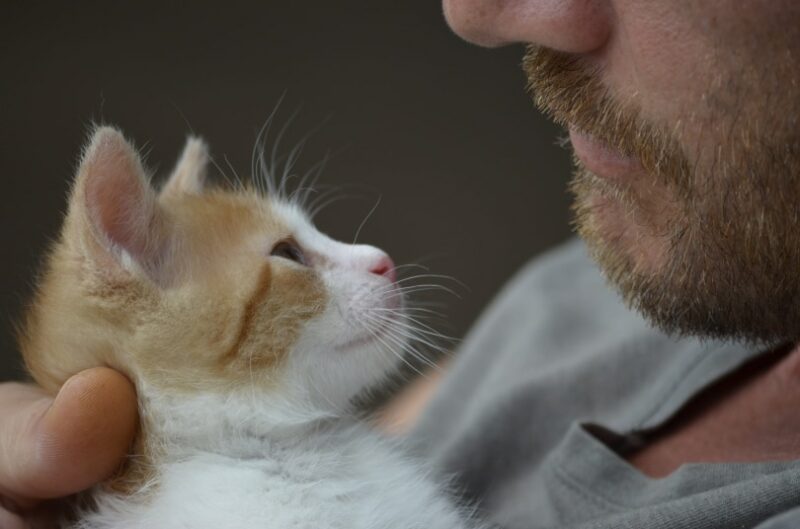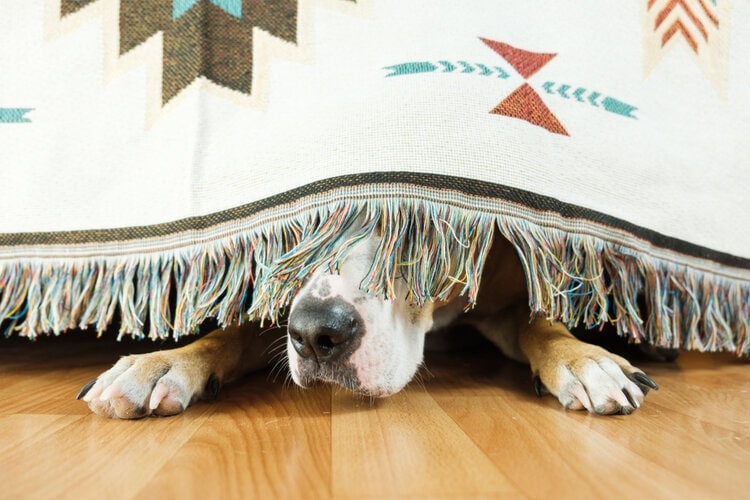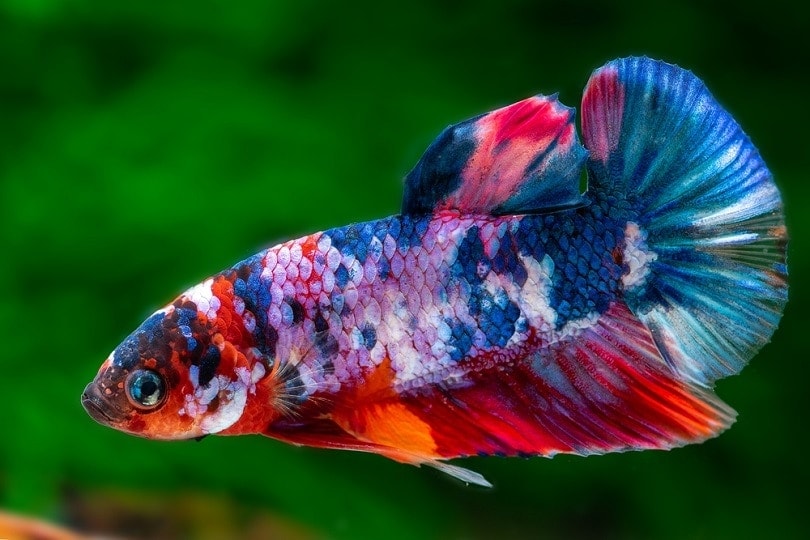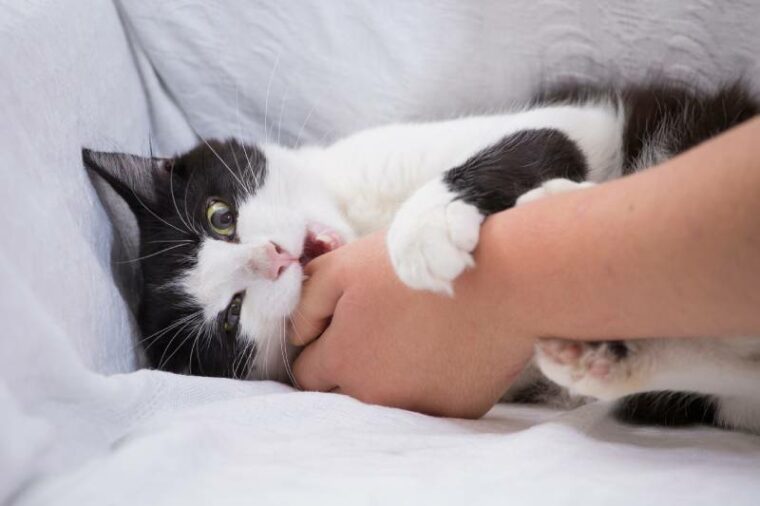
Click to Skip Ahead
For your cat, intense play or prolonged petting can easily turn into overstimulation, resulting in biting and scratching. This phenomenon occurs when cats become conflicted during play or petting, especially if these activities last longer than their comfort level allows. This interval depends on the individual cat, their degree of tolerance, their trust in the person, and their state of mind.
An overstimulated or irritated cat has dilated pupils, flattened ears, and a wavy tail that moves rhythmically and nervously. Your cat may also growl or lightly bite you to warn you to stop touching them.
The 7 Signs That Your Cat Is Overstimulated
Overstimulated cats will let you know that something is wrong through several signs 1. Here are the most common ones.
1. Wagging Tail
A cat’s tail moves almost constantly, except when sleeping, though even when they dream, they can wag their tail. When cats are overstimulated, they start to wag their tails quickly, rhythmically, and nervously.
Cats do not wag their tails only when they are overstimulated, however. They can also have rapid tail movements and keep their tail low when they are nervous, stressed, or playful.

2. Ears Laid Back
Overstimulated cats will flatten their ears. This behavior tells you that they feel uncomfortable and need space. Flattened ears also appear in cats when they are scared or angry. Most of the time, cats that have their ears in this position are ready to attack.
3. Tense Body
When cats are overstimulated, their bodies tense up as they get ready to attack. A tense body can also tell you that your cat is angry.
To determine the difference between an overstimulated and an angry cat, you must carefully read the signs that your pet shows you. Either way, though, you risk being bitten or scratched if you don’t give them space.
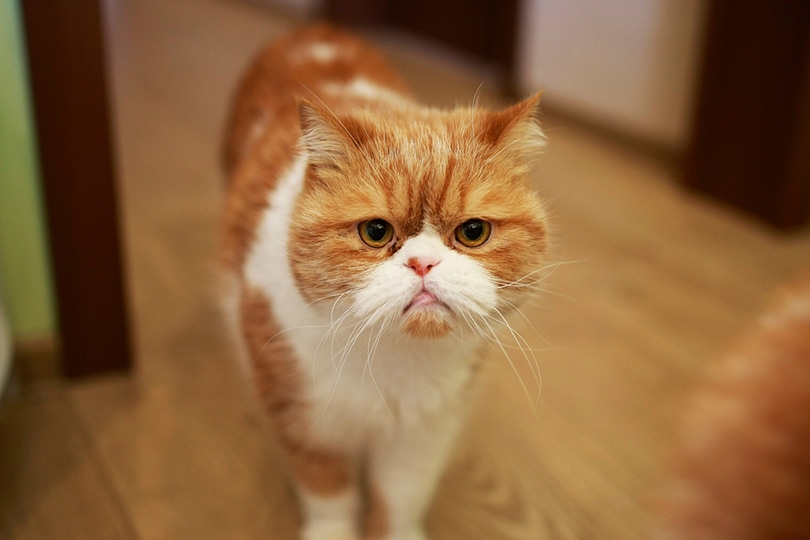
4. Dilated Pupils
Your cat’s pupils can dilate for several reasons, including overstimulation, playfulness, pain, and certain medical conditions. A playful cat also shows other signs, such as a raised tail, forward-pointing ears, and forward-pointing whiskers. Your cat will follow a toy (prey), lift their bottom, shake it repeatedly, and then launch over the toy.
If your cat suffers from a medical condition, they will not show this behavior. The medical conditions in which cats can have dilated pupils include2:
5. Twitching Skin
Cats that are overstimulated can have twitching/rippling/rolling skin. This sign can also appear when they are angry or have certain medical conditions, such as twitchy cat disease (hyperesthesia or rolling skin disease). This condition is unique to cats (it does not occur in dogs) and affects certain breeds more often (Siamese, Persian, Burmese, and Abyssinian). Other clinical signs that may occur with this medical condition include:
If your cat shows these signs, take them to the vet.

6. Flattened Whiskers
Cats’ whiskers flatten when they are overstimulated. However, cats can also flatten their whiskers when they are scared.
A frightened cat has their ears laid back and parallel to their head, their whiskers flattened, their back arched, their fur ruffled, and their tail up. A scared cat might also meow insistently.
7. Following Your Movements
Overstimulated cats will follow your hand movements. This is when many of them will also attack. If your cat starts following your movements, it is recommended to give them pace or distract them so you don’t get bitten or scratched. Also, distracting or giving them space will help them overcome this moment faster. Overstimulated cats may also low growl to warn you to give them space.

How to Prevent Overstimulation in Cats
Here’s what you can do to prevent the overstimulation of your cat and thus avoid being bitten and/or scratched:
Conclusion
Overstimulation in cats occurs when they are petted for a long time or the play gets too intense. It happens due to a conflicted emotional state between enjoying the moment and letting their guard down and feeling vulnerable. An overstimulated cat will signal that you need to give them space to recover if you don’t want to be bitten or scratched. Signs of overstimulation in cats include a wagging tail, laidback ears, flattened whiskers, and twitching skin. They can also growl, puff their hair, or tense their body.
If your cat shows these signs, it is recommended to give them space and let them recover. In some cases, distracting your cat with toys while creating physical distance can help get them out of this state.
Featured Image Credit: Luis Echeverri Urrea, Shutterstock




